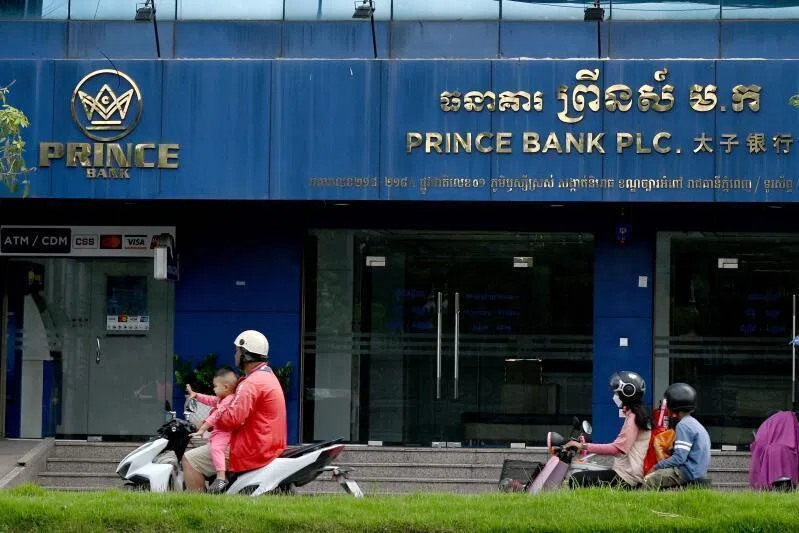For subscribers
How Chinese underground banks became the world’s biggest money launderers
They connect rich Chinese, drug cartels and North Korean hackers – without anyone meeting.
Sign up now: Get ST's newsletters delivered to your inbox

A branch of Prince Bank, a commercial bank under Prince Holding Group, in Phnom Penh. The US authorities describe the Prince Group as one of Asia's largest criminal empires.
PHOTO: AFP
The Economist
Follow topic:
Chinese firms have dominated almost every legal industry they have entered, from steel to ships, batteries to electric vehicles. They drive down costs and prices and cause no end of consternation in rich countries that are seeing their own manufacturing shrink. Now Chinese underground organisations are taking over one of the world’s biggest illicit industries – the international money laundering networks that facilitate crimes from drug smuggling to cryptocurrency theft by North Korean hackers.
Since money launderers do not publish quarterly reports it is difficult to know exactly how large their industry is. America’s Treasury Department has estimated that around US$154 billion (S$201 billion) in illicit proceeds – mainly from the sale of illegal drugs in America by cartels based in Mexico – flow through China each year. That suggests Chinese networks launder most of the cash spent on illicit drugs in America, a sum estimated to have come to US$153 billion in 2017 by the US Bureau of Economic Analysis, which conducted the most recent credible study.

